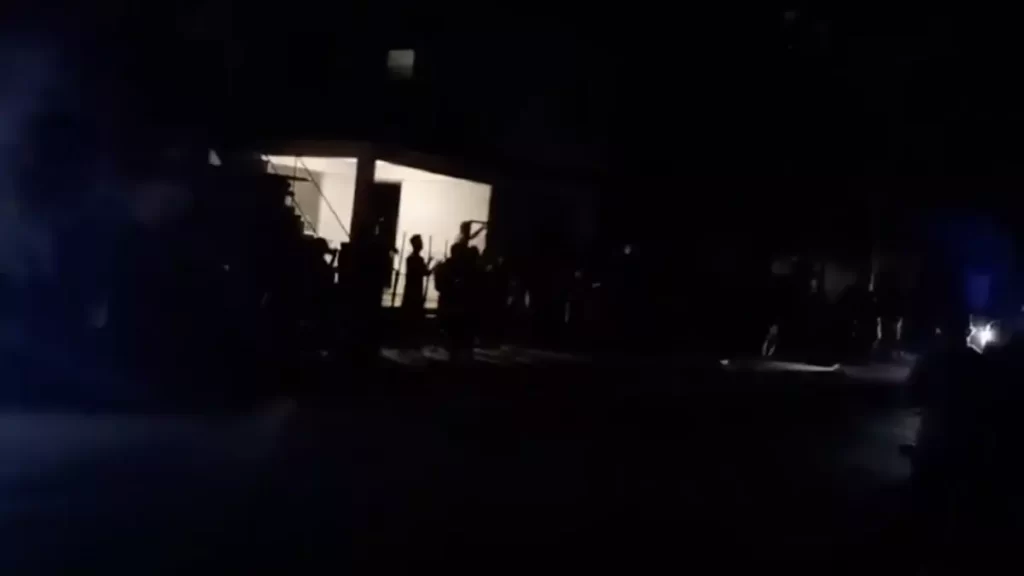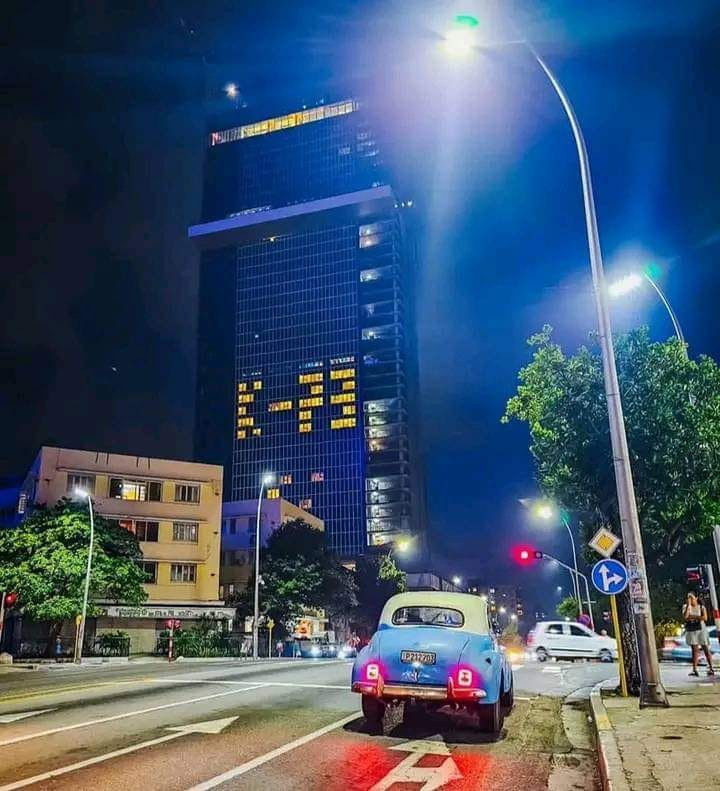
![]() 14ymedio, Havana, 17 March 2024 — “We want electricity, we want electricity!” In Holguín, they can no longer cope with the blackouts, and on Saturday night, a crowd went out to demonstrate by banging on pots and pans in the municipality of Cacocum. “People threw themselves into the street, and it was not four or five, but dozens,” a source tells this newspaper.
14ymedio, Havana, 17 March 2024 — “We want electricity, we want electricity!” In Holguín, they can no longer cope with the blackouts, and on Saturday night, a crowd went out to demonstrate by banging on pots and pans in the municipality of Cacocum. “People threw themselves into the street, and it was not four or five, but dozens,” a source tells this newspaper.
In the province, the power went off yesterday at six in the morning and, after seven at night, the residents’ complaints were widespread. “I’ve just been without power for 14 hours and 15 minutes. It’s abusive, with not enough time to make coffee in the morning, or lunch, or cook food, or have cold water, because when they put it on there’s not even time to make ice, you have to buy food on the street.” This is how Maidelys describes the litany of problems faced by the residents.
In the neighborhood of Loma de la Cruz, for example, the water has not arrived for days, says Manuel, due to the lack of power required to pump it. “When you have to buy purified water on the street, it’s a disaster,” he says. “People are buying that water, which is usually only for drinking, for everything, even for cleaning.”
“I’m in the dark again, and all the children in the families around me are crying. It hurts me to think that they and I, born in the 90s, will share similar childhoods; and that their parents, like mine, will have to grab fans to ward off the heat and the nocturnal terrors of their children.” This fragment is not from an opponent, but from an article published this Saturday in Girón, the Communist Party newspaper in Matanzas. Not even the official press can continue to gloss over the energy disaster that Cuba is going through.
Note to readers: a ‘nighttime’ video can see here. We were not able to insert it into this post.
Nor can the the Minister of Energy and Mines, Vicente de la O Levy, hide it. His statements to national television this Saturday fully show the “complex energy situation.” The minister assures that this Monday the Guiteras thermoelectric will go into operation in Matanzas, with a power of 280 megawatts, higher than what it had when it shut down for one more repair. However, he also warns that “the situation will remain tense.”
The “fundamental problem” pointed out by De la O Levy is “the issue of fuel.” According to his words, which do not specify whether the donations from Venezuela and Mexico have stopped, they are undertaking “an intense work and a great sacrifice” at a financial level, “because we have to buy fuel in the international market.”
The minister concedes: “We have debts, and we are renegotiating and working with each country. Some have accepted; they understand our situation with electricity.” As an example, he mentioned the “boat that will arrive on the 23rd, with about 43,000 tons of fuel.”

The minister may well be referring to the tanker Eco Fleet, which arrived from Tunisia almost three weeks ago, on February 25, and has not yet unloaded. That cargo, in any case, as the minister explained, will only give fuel for “ten or twelve days.” Then, “another ship will arrive on the 29th, with crude oil that we can refine,” but the energy generation that this product will allow once refined will not happen until April 6, the senior official said. Will things get better from then on? It doesn’t seem so: “That week [April 6] we are going to have a better situation, but then there will be a bump. We are buying fuel with the few financial resources we have.”
In the meantime, an “exact hour-by-hour planning” will continue on the part of the Government. They are, says the minister, doing the impossible to reserve fuel for the hours of the night, “so that people can rest, because we are aware of what is happening.” There are regions, he acknowledges, “that have entire mornings of blackout and practically the whole day.”
Not only does this occur in Holguín but also in other provinces, such as Mayabeque, where the electricity company reported blackouts of more than 10 hours in a row, with power going on for only two to three hours. In Camagüey, independent journalist José Luis Tan Estrada reported that the deficit on Saturday was 105 MW, “which represents 99 percent of the province having no electricity from 5:00 in the morning.”
I had to throw away a lot of food, chicken thighs, fish and even cheese that spoiled,” says Dunia, desperate
The same thing happened in Sancti Spíritus. “I had to throw away a lot of of food, chicken thighs, fish and even cheese that spoiled,” says Dunia, desperate. “We are worn out, on the verge of a nervous breakdown.” The electricity company had warned that due to the deficit, there would be more blackouts than planned: “It is necessary to extend the affected time period, as well as to advance some circuits before the scheduled time.”
In San Antonio de los Baños, Artemisa, cradle of the massive Island wide demonstrations of July 11, 2021, rumors of protests proliferate after a Saturday of continuous blackout. “They put it on and then turn it off again at about eight at night,” says María Fe. “My brother got in the shower and they cut off the power. I told him to get out, to shave with salt, because you can’t bathe in cold water. If we get sick, things will get complicated.”
Once the sun went down yesterday, mosquitoes crowded onto the screens of mobile phones, the only light in many neighborhoods of Havana, which, as the minister acknowledged, also suffers “significant affects.” In Central Havana, for example, there was an “extra” blackout that was not in the planned calendar: “Things must be very bad for them to dare do it here; our block was not planned for today,” Miguel observes.
This man, age 40, feels tired. “I calculate that last night’s blackout was a little more than three hours. When the electricity returned, the murmur of joy and relief that ran through the entire neighborhood was really impressive.” From Miguel’s balcony, you can see an object that never loses power. On Friday, the mammoth Tower K, on 23rd Street in El Vedado, adorned its facade with a play of lights. “K-23, it said,” says Miguel. “But the 2 was missing a piece. Even that building suffers from blackouts, albeit a small one.”
Translated by Regina Anavy
____________
COLLABORATE WITH OUR WORK: The 14ymedio team is committed to practicing serious journalism that reflects Cuba’s reality in all its depth. Thank you for joining us on this long journey. We invite you to continue supporting us by becoming a member of 14ymedio now. Together we can continue transforming journalism in Cuba.
